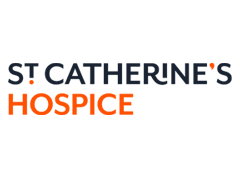Understanding the various file types is essential for creating high-quality, professional-looking projects in design.
Each file type serves a specific purpose, and knowing when and how to use them can significantly affect the outcome of your design work. At ExtraDigital, we know how these choices can increase your digital presence. Whether through web graphics, advertising, or multimedia, this guide will explore the world of file types, providing the ultimate breakdown of how we use them correctly to elevate your design game.
JPEG (Joint Photographic Experts Group)
JPEGs are perfect for photography and online images and offer a good balance between quality and file size, which is important for fast-loading web pages. However, consider different formats for elements requiring repeated updates or editing due to JPEG’s loss in quality with each save.
PNG (Portable Network Graphics)
PNG is your go-to when your website or graphics need clarity with elements like logos or icons because it supports transparency and lossless compression. This format ensures that visuals remain crisp and clear, regardless of the background.
SVG (Scalable Vector Graphics)
SVG performs well in logo and scalable icon applications across different device resolutions. Whether you’re designing a responsive website or mobile applications, SVGs make your graphics look sharp at any size, making them ideal for different display sizes.
GIF (Graphics Interchange Format)
GIFs have gained widespread popularity for their ability to create short, animated loops. With these features, you can use GIFs to catch your audience’s attention on social media or your website without significantly slowing down page loading times.
PDF (Portable Document Format)
PDF is a format commonly used for sharing documents across different platforms while preserving the layout and formatting. Best for presentations, design proposals or simple documents in a professional format, PDFs are essential for business communications where preserving layout and content are key.
PSD (Photoshop Document)
PSD is the file format for Adobe Photoshop, the industry-standard software for graphic design and photo editing. PSD files retain all the layers, masks, and adjustments applied during the design process, making them incredibly flexible for further editing.
While not directly used for the web, PSD files are crucial in the design process, allowing designers to create detailed web graphics and advertisements before exporting to more web-friendly formats.
AI (Adobe Illustrator Artwork)
AI is the file format used by Adobe Illustrator, a vector graphics editor favoured by designers for creating logos, illustrations, and typography. AI files preserve vector-based artwork – whether tiny icons on a website or upscaled roadside billboards, AI allows infinite scalability without losing quality.
TIFF (Tagged Image File Format)
TIFF is highly appreciated for its high-quality print projects. TIFF files ensure that your advertising materials and large-format prints have the highest image fidelity, though they are less suitable for web use due to their large size.
EPS (Encapsulated PostScript)
Ideal for printed company logos and professional graphics that need to be resized frequently, EPS files offer versatility for high-resolution print materials such as business cards and promotional items.
FIG (Figma)
Recently, Figma has been shining in UX/UI design for websites and apps. Its collaborative platform makes it perfect for teams to design and prototype in real-time, ensuring a streamlined workflow from concept to final design.
Sketch
Exclusively available on macOS, Sketch is suited for designing crisp, scalable UI and digital assets, beneficial for applications where design and style consistency are crucial.

MP4 (MPEG-4 Part 14)
MP4 is a versatile multimedia container storing video, audio, subtitles, and images.
MP4s are excellent for website backgrounds and promotional videos due to their high compatibility and balance of quality with file size, making them a standard choice for multimedia on various platforms.
MOV
Like MP4, the MOV file format (developed by Apple) is beneficial for creating visually appealing promotional videos or ads. Choose MOV for high-quality videos that require extensive editing and compatibility with Apple devices.
AVI (Audio Video Interleave)
The AVI file format is a multimedia container by Microsoft. It’s Ideal for archival video storage, where quality is more important than file size. AVI files are also used for playing back videos on desktop software without worrying about bandwidth usage.
WMV (Windows Media Video)
Another format developed by Microsoft is optimised for web streaming and playback on Windows devices. It offers strong compression to reduce video file sizes with minimal quality loss.
WebM (Web Media File)
WebM is particularly great for online advertising and HTML5 video streaming, given its efficient compression and high quality, ensuring videos play smoothly on all modern browsers without requiring royalties.
Conclusion
We know mastering file types is crucial for achieving professional results and staying ahead of the competition. Whether you’re creating web graphics, print materials, or producing/sharing video content, selecting the right file format can make all the difference in the success of your projects.
Our understanding of each file type and when to use them effectively allows us to deliver content that meets and exceeds expectations. At ExtraDigital, we are dedicated to using our expertise to increase your brand’s digital strategy and ensure that all content is used for its intended purpose.
With our strategic approach and creative expertise, our team at ExtraDigital can help you captivate your audience, enhance user experience, establish a strong brand presence, and cultivate meaningful connections.
Contact us today to learn more about our design services. Let us help you achieve success that leaves lasting impressions.











